Ocean Week in Review – June 11, 2021
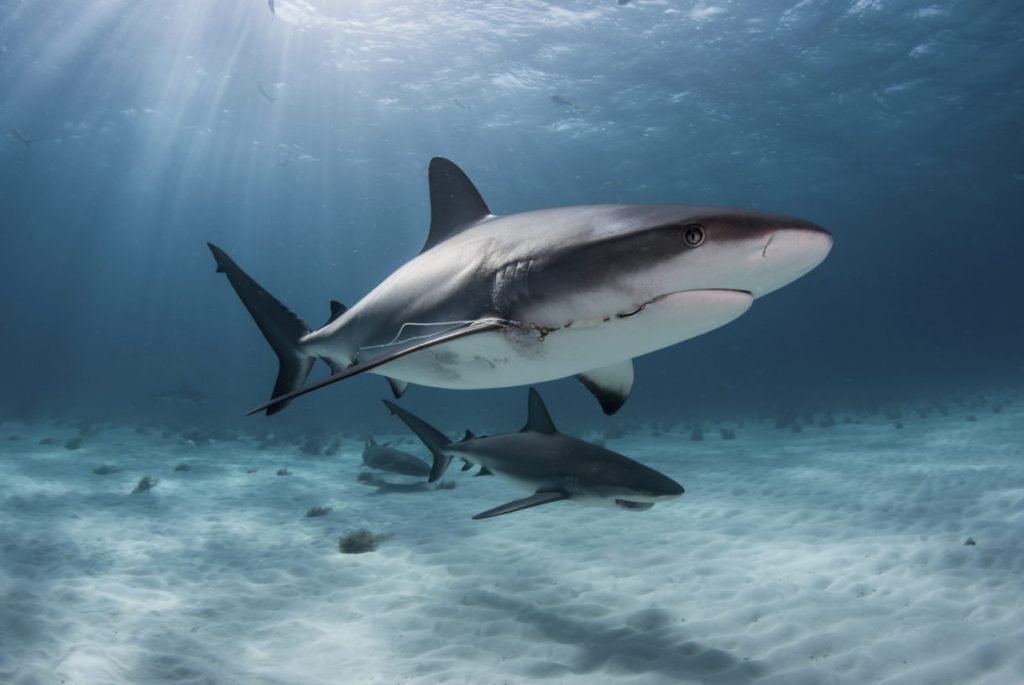
1. U.S. Shark Fin Sales Elimination Act Passed, Part of Bill to Combat China’s Growing Economic Influence
The United States Senate has passed rare bipartisan legislation to counter China’s growing influence by investing more than $200 billion in American technology, science, and research. The product of multiple committees, the bill is one of the few areas of successful bipartisan cooperation in the Senate. The base of the bill comes from legislation introduced last year, called the Endless Frontier Act. When the Senate Commerce, Science and Transportation Committee debated and amended the Endless Frontier Act, many items were added, including a provision dealing with country of origin labeling for king crab and another to ban the transport, sale, or purchase of shark fins. The bill must pass the House before being signed into law.
Editorial Note: If you support the Shark Elimination Act and would like to add your voice to your representative’s decision process, click here to email your representative.
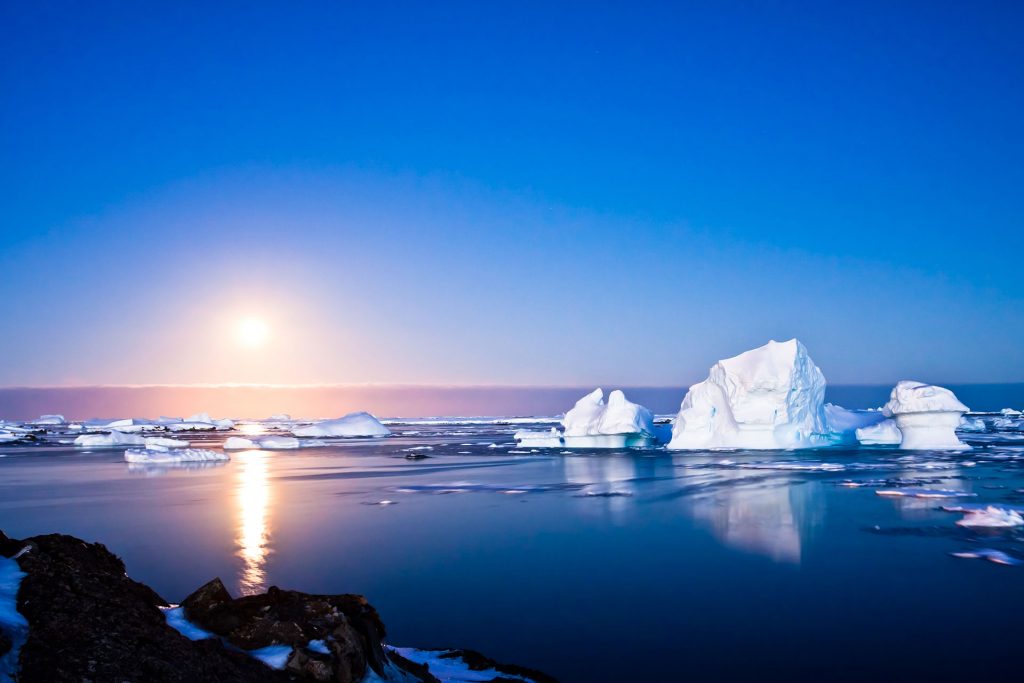
2. New Ocean Recognized
The National Geographic Society has announced a new Southern Ocean in Antarctica, bringing the global total to five. Many atlases and cartographers reference the nonprofit scientific and educational organization’s mapping standards. The Southern Ocean comprises the waters surrounding Antarctica, out to 60-degrees south latitude. Scientists have long known that these waters form a distinct ecological region defined by ocean currents and temperatures. The US Board of Geographic Names, a federal body created in 1890 to establish and maintain uniform geographic name usage through the federal government, already recognizes the Southern Ocean as occupying the same territory, but this is the first time the National Geographic has done so. The move is important for educational purposes so that when students learn about parts of the ocean world, they learn it is interconnected.

3. Giant New Crustacean Discovered, Scavenges Deepest Depths of the Ocean
A discovery of a new crustacean living in ocean trenches helps researchers understand the subtle interactions between organisms and their environment. It also gives us a glimpse into the hadal zone (anywhere deeper than 3.7 miles), an extreme habitat filled with extraordinary biodiversity. Eurythenes atacamensis is an amphipod, a type of crustacean closely related to a shrimp, endemic to the Atacama Trench. Measuring more than 8 centimeters in length, it is nearly twice the size of its nearest relative. As a scavenger, this amphipod plays a critical role within the food web by intercepting and redistributing food sinking down from above. Hadal inhabitants have a suite of biochemical, morphological and behavioral adaptations that allow them to thrive in the trenches. Pairing traditional morphology (the detailed study of an organism’s shape) with DNA barcoding, researchers identified that this was a different and previously undescribed species.

4. Hawaii Marks World Oceans Day With New Laws to Protect Sharks and Marine Life
Hawaii Governor David Ige signed nine new laws in a ceremony to mark World Oceans Day. Ige described the ocean as Hawaii’s connection “to our food, our culture, our leisure time, our business and — most importantly — to each other.” The new laws include a ban on intentionally or knowingly capturing, entangling or killing a shark in state marine waters. Another sets up a five-year ocean stewardship special fund and a $1 user fee for the conservation, restoration, and enhancement of Hawaii’s aquatic resources. Several of the measures approved by Ige are intended to allow for the sustainable harvesting of marine life. The governor tied the new laws to the Holomua: Marine 30×30 Initiative to effectively manage the state’s nearshore waters. It established 30% of nearshore waters as a network of marine management areas to benefit fisheries and ecosystem resilience by 2030.
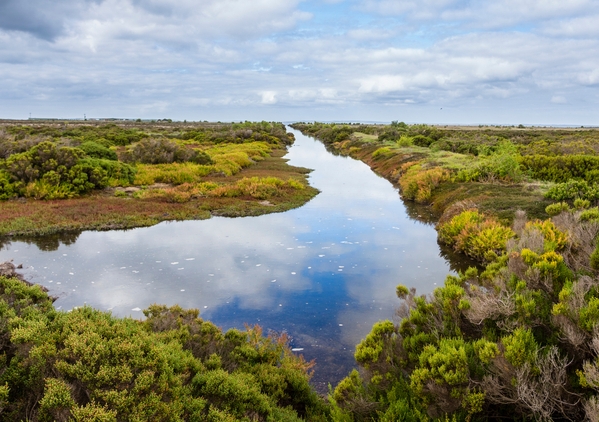
5. US President Pushes Protection for More Streams and Wetlands
The current administration plans to reverse its predecessor’s efforts to scale back the number of waterways and wetlands under federal protection. The earlier rollback is “leading to significant environmental degradation,” according to the Environmental Protection Agency (EPA). The EPA and Army Corps of Engineers will craft a new set of protections for waterways. With the announcement, the current administration is wading into a decades-long battle over how far federal officials can go to stop contaminants from entering small streams and other wetlands. The current administration’s rulemaking will attempt to strike a balance between conservation and development that earlier administrations failed to reach. Since the end of the Revolutionary War, more than half of the 221 million acres of wetlands in the contiguous United States have been drained, often for farming.
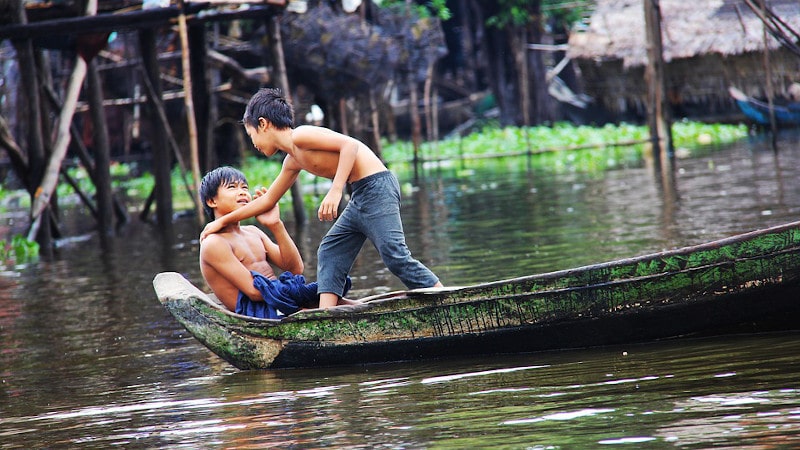
6. Protect the Sea, Neglect People? Social Impact of Marine Conservation Schemes Questioned
Governments and international organizations are working to conserve marine spaces and stem the depletion of biodiversity and fish stocks internationally. New research examines the impacts of marine conservation across Southeast Asian communities. The detailed analysis demonstrates a mix of positive and negative impacts: on the positive side, communities can find economic relief from the slowing deterioration of fish stock, and, in the case of Cambodia as a post-conflict country, even experience improving relationships with the state. Negative consequences included social division, heightened livelihood anxiety, and a false sense of economic security. On balance and at the regional scale of Southeast Asia, long-term community exposure to marine protection schemes was linked to decreasing wealth and increasing child mortality. The researchers recommend that the environmental objectives of marine protection be supplemented by social impact analyses and livelihood support schemes that help alleviate the disruptions to community lives.

7. Meet the Community-Led Conservation Advocate Working to Protect Madagascar’s Coasts
In an interview for Smithsonian Magazine, Vatosoa Rakotondrazafy of MIHARI, Madagascar’s locally managed marine area (LMMA) network, shares insights of working in community-led marine conservation. MIHARI is a partner of Blue Ventures, and as Vatosoa explains in the article, it is currently supporting over 200 locally-led LMMA associations and more than 500,000 small-scale fishers. Vatosoa has dedicated her career to these coastal communities and strengthening their capacity for conservation, as she believes they are the guardians of our seas. “Even if these communities did not receive a formal education, for me, they have a doctorate in ocean science and governance and years and years of generational knowledge of natural resources management. I am always amazed at how well they know the ocean… all that without having complicated scientific tools or formal education,” she says.
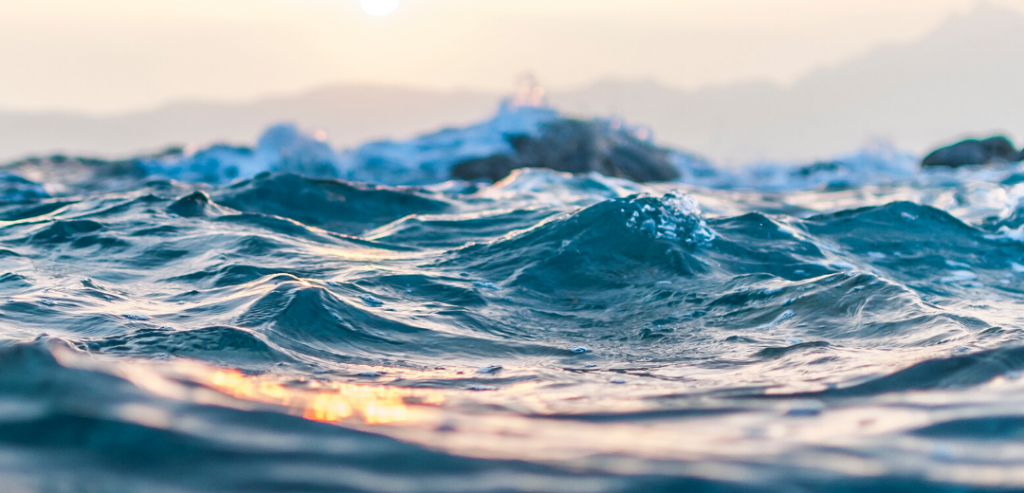
8. White House Releases Official Ocean Month Proclamation
U.S. President Joe Biden has proclaimed June 2021 National Ocean Month. The administration calls upon Americans to take action to protect, conserve, and restore the ocean and coasts. The ocean powers the economy, provides food for billions, supplies 50% of the world’s oxygen, offers recreational opportunities, and regulates weather patterns and the global climate system. Climate change is a global challenge that is integrally linked to the ocean. By protecting the ocean and coastal ecosystems and resources, we protect the worldwide economies and people that depend on them, the proclamation reads. The statement notes the administration’s efforts to combat climate change and protect the ocean, including expanding offshore wind energy, investing in resilient, reliable coastal infrastructure, and working to conserve at least 30% of United States lands and waters by 2030.
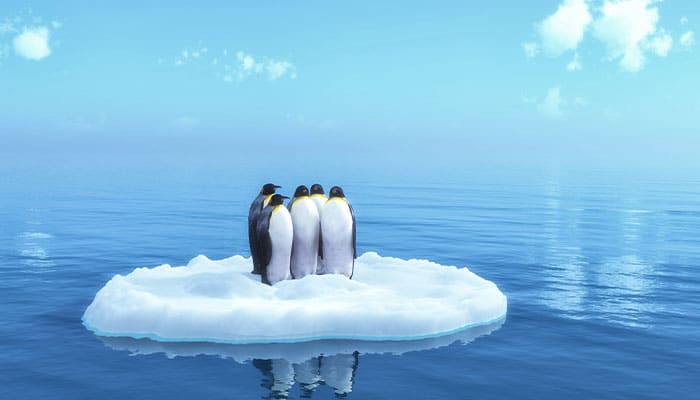
9. Future Antarctica Marine Park Relies on European Union Engaging China
The European Union (EU) could be key to preserving Antarctica’s waters through global agreement for three new marine protected areas (MPAs). Rising tensions between China and the West have prevented China from supporting any Southern Ocean MPA proposals. The EU is in a unique position to take leadership to protect Antarctica: as a supranational organization, the EU has no territorial claim in the Antarctic. MPAs need to be approved by consensus between 25 nations plus the EU, who make up the Commission for the Conservation of Antarctic Marine Living Resources (CCAMLR). In October, the 15th Conference of the Parties for the Convention on Biological Diversity could be an excellent backdrop for China to announce its support for Antarctic MPAs. The East Antarctic MPA would protect around one million square kilometers across three zones critical for wildlife habitat and foraging.
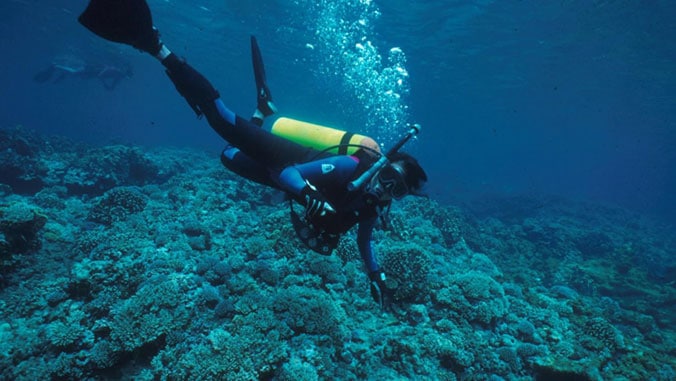
10. Experts Aim to Keep Coral Reefs From Dying Off
Coral reefs could be almost extinct in 30 to 50 years under the worst-case scenario, according to an international group of scientific experts, writing in Biological Conservation. The team modeled future reef changes for two CO2 emission scenarios: the worst case and a scenario acceptable under the Paris Agreement. The former would lead to the near-extinction of reefs in 30 to 50 years, while the latter would give some corals time to adapt. A massive energy transition away from greenhouse gas-emitting fuels is the most effective and the only plausible one on the global scale. Coral reefs worldwide are threatened but not doomed. There is a window of opportunity to act and protect these ecosystems. The group asserts that saving reefs requires worldwide political support, similar to campaigns against public health crises.
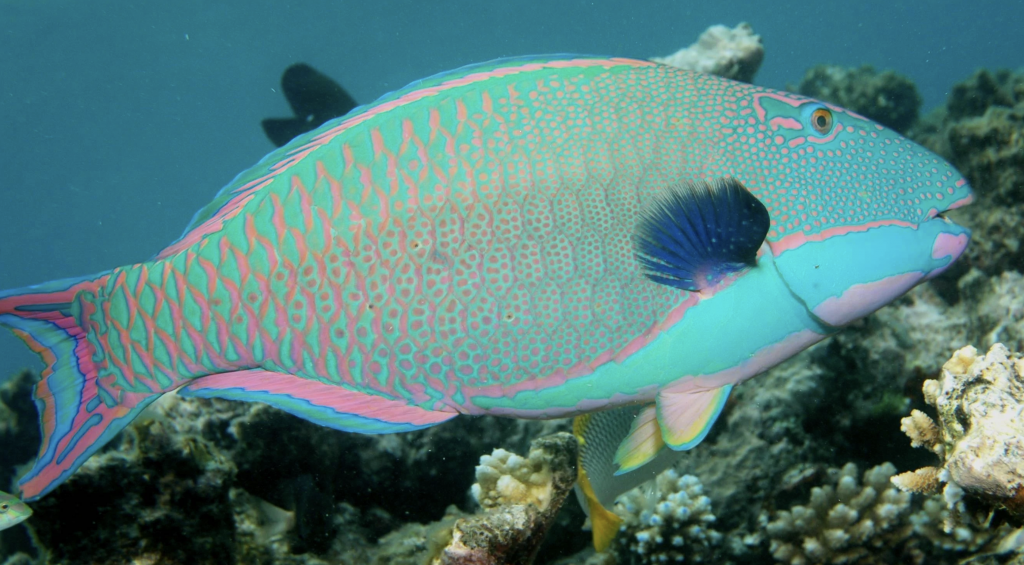
11. Understanding Area-Based Management in US Waters: Context for the 30×30 Marine Conservation Goal
The Biden-Harris Administration’s policy calls for the U.S. to conserve at least 30% of lands and waters by 2030. The marine waters of the United States, which cover nearly 12.4 million square kilometers, are managed through a range of legal authorities and strategies aimed to conserve the ocean and coastal resources, promote sustainable fisheries, and ensure health and human safety. For example, MPAs cover 26% of marine waters, with most (98%) of this protected area within the Pacific Islands region. Meanwhile, fishery management areas target key habitats for commercially and recreationally important species, protecting everything from nursery grounds to migratory routes. The Endangered Species Act and the Marine Mammal Protection Act apply everywhere within U.S. jurisdiction and complement other conservation strategies. This complex picture of ocean uses and authorities must inform our conservation planning.
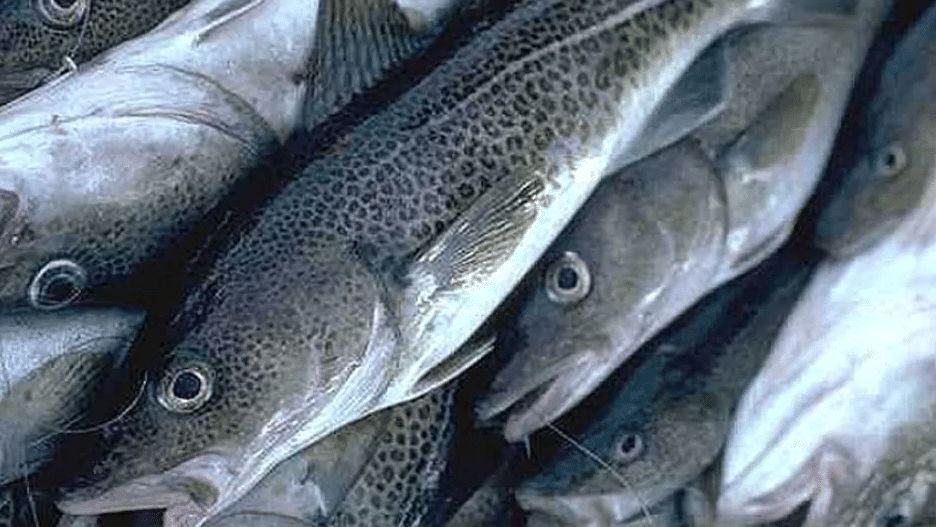
12. Fisheries and Oceans Canada (DFO) Raises Cod Quota—Raises Questions About Conservation
Fisheries and Oceans Canada (DFO) has announced that it will increase the 2021 quota for northern cod, despite the fish being under a fishing moratorium. DFO has a legal obligation to rebuild populations under the Fisheries Act. However, the first rebuilding plan for northern cod was released in December 2020, 28 years after the stock collapsed. Some have argued that fishing is not the main reason Northern cod has failed to recover, blaming environmental factors. But fishing is one of the few things humans can control. According to DFO policy, fishing should be kept as low as possible to allow rebuilding. Given that fishing takes place in a complex ocean ecosystem, reducing the cod quota is only one aspect of rebuilding. Equally important is rebuilding the fish stocks that cod feed on, such as capelin, which are also at historically low levels.
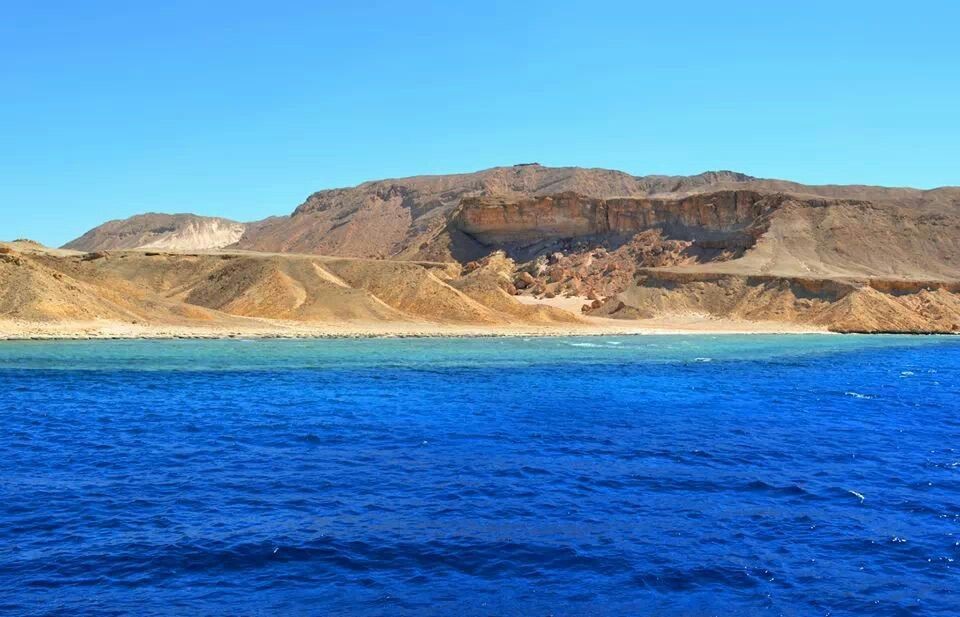
13. Egypt Launches Marine Conservation Campaign in the Red Sea
Egypt has launched a marine conservation campaign in the Egyptian Red Sea, the first of its kind in the Middle East and North Africa region as part of the ECO EGYPT campaign. The purpose is to raise awareness about marine conservation in the area and highlight the importance of ecosystem protection and restoration. The campaign sheds light on the most common tourism practices that harm the coastal environment and warns against them. The country hopes to achieve a balance between benefiting from ecotourism sites and protecting them to maintain sustainable biodiversity and tourism. The Minister of Environment said the campaign aims to protect the marine environment and preserve the biological diversity of the Red Sea for future generations. The minister noted the importance of promoting environmentally friendly practices in tourism by strengthening partnerships with the private sector and international bodies working in conservation.

14. Chile Wants to Protect High Seas Ahead of Global Treaty
President Piñera of Chile has proposed creating a high seas marine protected area (MPA) on the Salas and Gomez and Nazca ridges, two underwater mountain chains 2,900 kilometers long. The region is isolated by the Humboldt Current and the Atacama Trench and has many unique ecosystems. Nearly half the species found there live nowhere else. The ridges also shelter migratory species like leatherback sea turtles and blue whales. Piñera said “it’s not enough” to protect only national waters (known as Exclusive Economic Zones), especially considering the global call to protect 30% of the ocean by 2030. Less than 1% of the high seas are protected by MPAs. While an MPA couldn’t tackle the impacts of climate change, it would support ecological resilience and address the direct impacts of human activities on marine biodiversity.
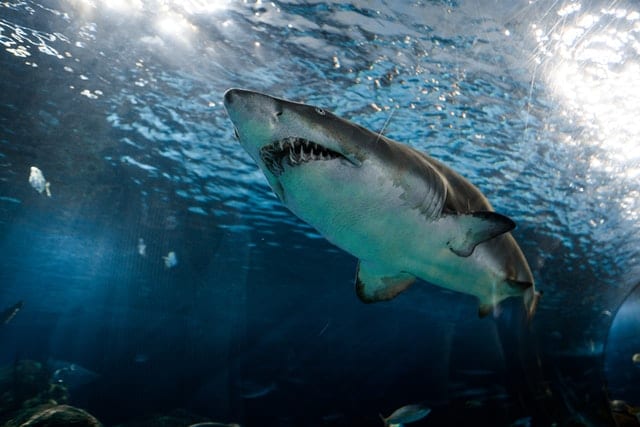
15. Great White Sharks No Longer a Common Sight in South Africa
Gansbaai, South Africa was once the shark capital of the world, but now the apex predator, which has survived over 400 million years, is in deep trouble. Their numbers are steeply declining, and sightings of the deadly predator off of the country’s western cape have been dropping rapidly for the past five years. Scientists believe long-line fishing is one of the main culprits. It legally targets smaller shark species exported to Australia for fish and chips and inadvertently depletes the sharks’ food sources. This creates greater competition between individuals, making it more difficult for each great white shark to survive. Another problem is fishermen unintentionally catching sharks. Without these predators circling the bay, seals have proliferated. More seals mean more fish are being eaten, affecting the delicate ecosystem of the ocean — an ocean we depend on for oxygen.
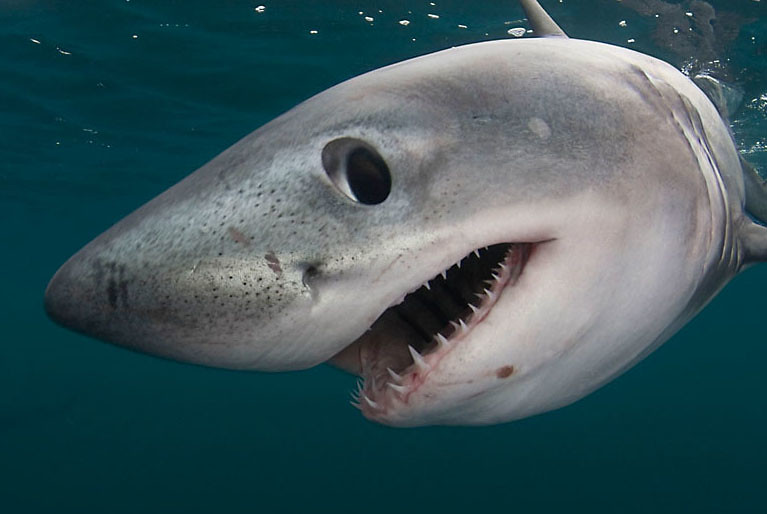
16. Rhode Island’s Atlantic Shark Institute to Study Five Shark Species
This summer the Atlantic Shark Institute intends to learn more about five shark species by catching and tagging several, dropping video cameras into the water to observe them in their natural habitat, and monitoring acoustic equipment to get a better idea of their travel patterns. The institute is studying great white, shortfin mako, thresher, porbeagle, and blue sharks. The goal is to tag five juvenile great whites, 10 female blue sharks, 10 porbeagle sharks, and 20 makos. The smaller, younger sharks are more likely to be found in Rhode Island waters, where they can feed on striped bass and dogfish. The bigger, older white sharks are more likely to be drawn to the waters off Cape Cod, where they feed on seals. Sharks are critical to the health of the oceans, making this research all the more important.
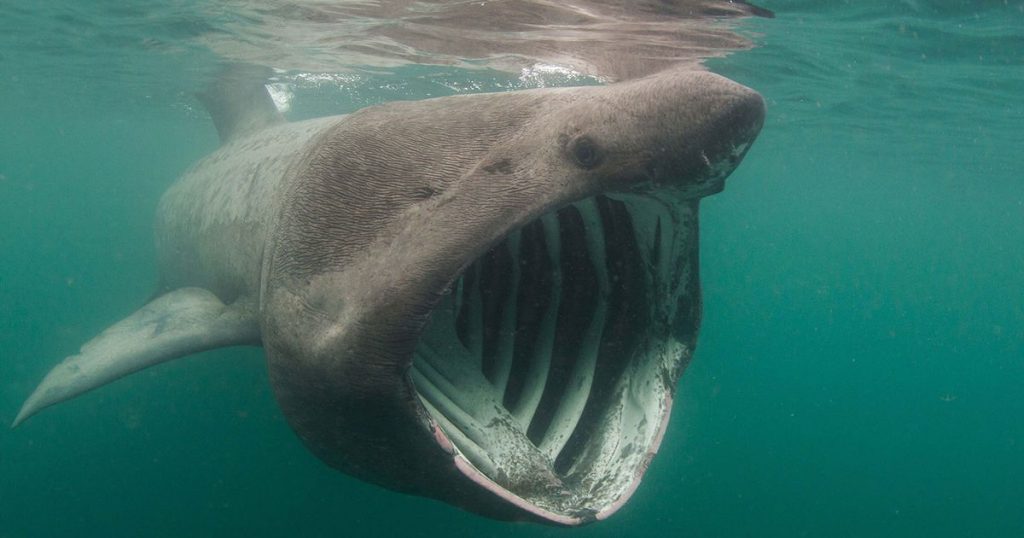
17. UK Group Releases Guidelines to Protect Basking Sharks From Human Activity
The guidelines were designed to help water-users avoid harming or harassing basking sharks, a protected species in the UK, and encourage the sharks to return to British waters each year. Basking sharks are mostly placid but can thrash their tails with great power if disturbed. The guidelines instruct boaters and kayakers to stay at least 100 meters away from the sharks, refrain from chasing or surrounding them, and avoid speed changes. Swimmers, divers, and surfers should stay at least 4 meters from sharks and avoid the tail, stay on the surface, and should not swim toward or touch the sharks. Recreationalists should not disturb sharks that are following one another closely as they may be courting. The guidelines recommend water users note the sharks’ direction of movement and quietly position themselves alongside to observe and enjoy the animals.
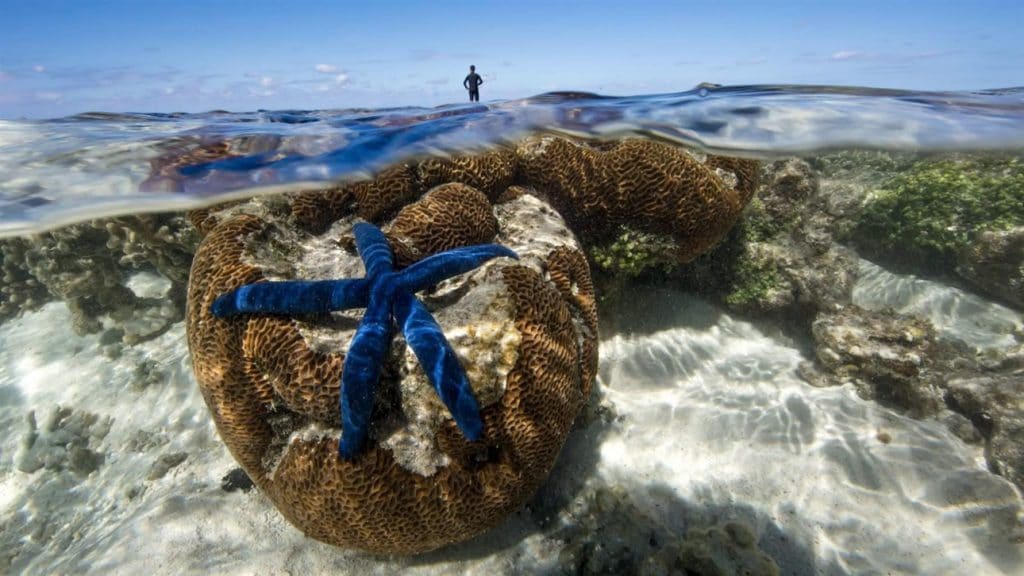
18. Studies Show Powerful Benefits of Fully Protected Ocean Areas
Although marine protected areas (MPAs) are the primary means to conserve marine ecosystems, the design and management of these areas greatly affect their efficacy. A study in Conservation Biology compared partially and fully protected MPAs along Australia’s Southern Great Reef. Researchers found no more fish, invertebrates, or algae in partially protected areas than in unprotected waters. Fully protected areas, in contrast, had 30% more fish species and 2.5 times more fish biomass compared with no-restriction areas. A study in Marine Policy examined the long-term impacts of no-take MPAs in Kenya and showed that high protections increased fish populations by 42% and were more effective at sustaining fish stocks compared with areas where the only restrictions were on fishing methods. These two studies build on a growing body of research that shows the importance of strong protections for achieving conservation benefits.
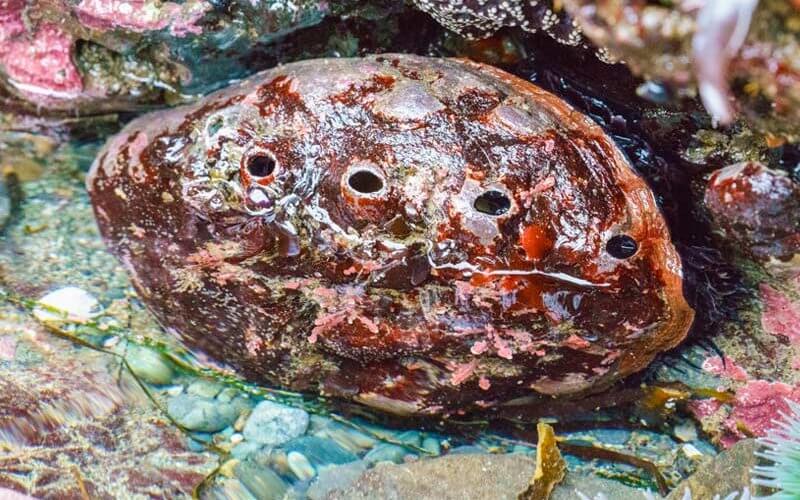
19. Graduate Student Examines Abalone Spawning Behaviors
The largest species of abalone in the world and the most common abalone found off California’s coast is in trouble due to overfishing, disease, and climate change. Marissa Velarde Wu, graduating master’s student at Cal State Fullerton, is mapping out red abalone spawning behaviors and characteristics to find out why populations are declining. The red abalone releases eggs in volcanic-like plumes underwater for external fertilization. Velarde Wu compared the body movements and the coinciding plumes to see how they changed over time. Spawning females could produce taller egg plumes and faster-moving eggs when they exerted body movement forces within a certain range. This new information on abalone reproductive behaviors could launch future studies and guide restoration strategies and policies for protected abalone species. The contraction force range can also be used to suggest where divers should release captive-bred abalones into protected habitats.
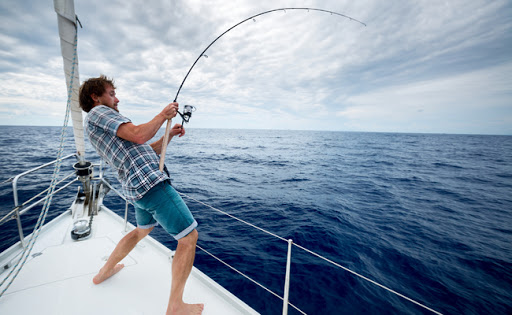
20. Sportfishers Dislike Competition, Complain When Sharks Compete for Fish
Anglers have extra competition in Georgia and Florida: successfully reeling in a hooked gamefish or other prized catch completely intact often depends on speed and luck as much as it does on brute strength and physical stamina. Last month charter boat captains asked the Florida Fish and Wildlife Conservation Commission for advice on dealing with sharks. Fishermen complained that sharks were attacking catches as they were reeled into the boat. Georgia commercial shrimp trawlers have been complaining about sharks tearing up their nets. The sharks are plentiful around the back of those boats because of the amount of bycatch the fishermen exclude. Some charter fishermen seize the opportunity if they have a customer interested in hooking a shark. While hardly a new problem, the bothersome sharks seem to be getting worse and worse.
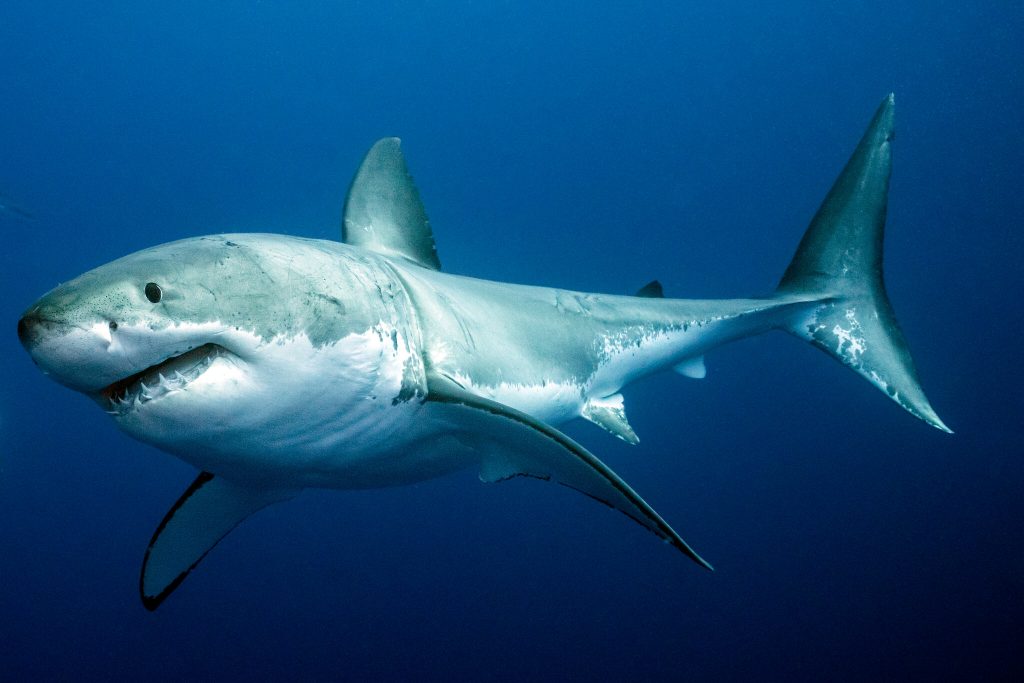
21. Rising Cape Cod Shark Detections are Due to Increased Tagging
The total number of great white sharks detected along the Cape has ballooned over the last few years as researchers tag more of them each summer. Only 11 individual sharks were detected by the Atlantic White Shark Conservancy off the Massachusetts coast in 2013. In 2020, they detected 118 individual sharks. Only three acoustic receivers were deployed in 2010, while researchers deployed 65 receivers last year. Receivers can only detect sharks tagged with acoustic transmitters, and many white sharks haven’t been tagged. However, local researchers have documented more than 500 white sharks from underwater video footage. This information indicates what the total population is doing. White shark activity is highest along Cape Cod, and the Outer Cape in particular, where seal densities are highest, and researchers have detected white sharks all along the coast of Massachusetts.
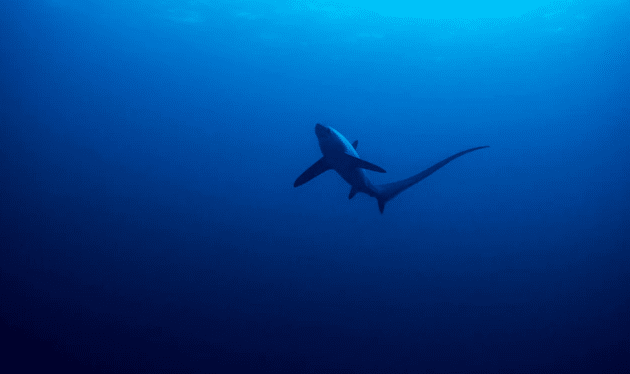
22. Mystery Event Caused Shark Populations to Crash 19 Million Years Ago
Sharks have existed for 400 million years, yet 19 million years ago, something dealt open-ocean sharks a huge blow—one from which they’ve never recovered. Studying shark teeth buried in deep-sea sediment, researchers found that current shark diversity is a small sliver of a much larger variety that was decimated by a previously unknown major ocean extinction event. The extinction reduced shark diversity by more than 70% and resulted in an almost complete loss in total abundance. There is no known climatic or environmental cause of this extinction, and it remains a mystery. Modern shark forms began to diversify within 2 to 5 million years after the extinction, but they represent only a minor share of the sharks that once existed. The findings indicate that the early Miocene was a period of rapid, transformative change for open-ocean ecosystems.
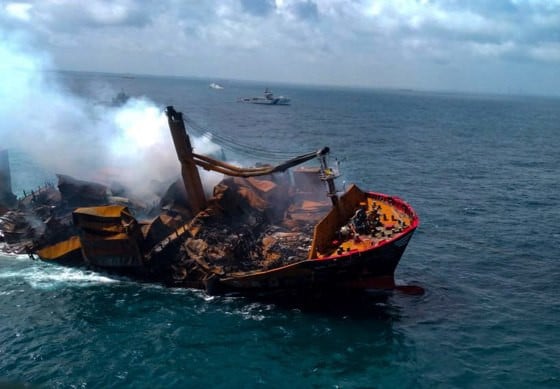
23. A Cargo Ship Sinks Off Sri Lanka which Sparks Fear of Environmental Disaster
After burning for two weeks off the coast of Sri Lanka, a cargo ship laden with chemicals has sunk. The wreck has already covered the coastline in plastic pellets and could spill oil as well. In response, the government has banned fishing along 50 miles of coast, and hundreds of soldiers are cleaning beaches. The ship was transporting 25 tons of nitric acid along with other chemicals and cosmetics. As the fire was extinguished, flaming containers laden with chemicals fell and broke open, spilling cargo into the sea. Authorities are taking emergency prevention measures to protect the lagoon and contain the damage from debris. Already the wreck has spilled an estimated 3 billion plastic pellets that will migrate into other parts of the ocean. The pellets, notoriously difficult to clean up, will stay in the environment for generations.
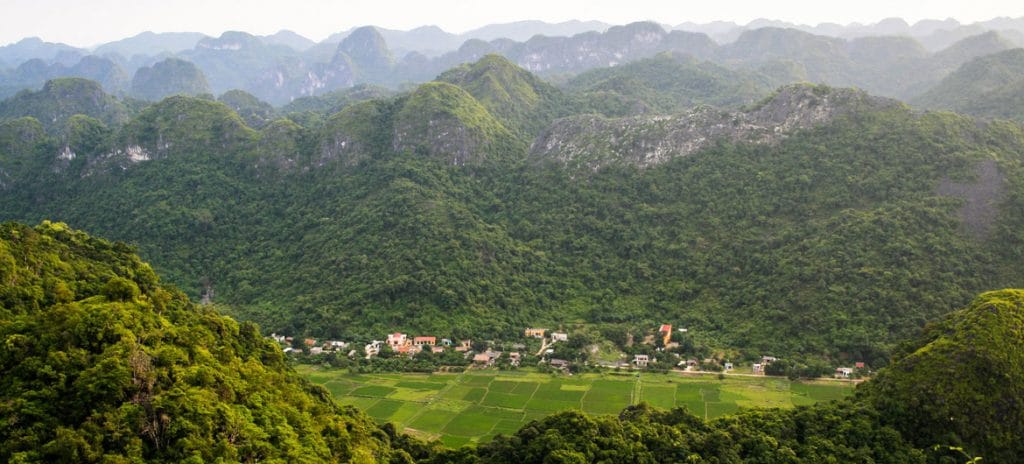
24. Massive Land Restoration Must be Matched by Commitment to Oceans to Protect Food Security: UN
UN agencies’ call to reinstate at least one billion degraded hectares of land by 2030 must be matched by a similar commitment to the oceans, or else risk a growing threat to global food security. In a new report, the agencies warned that humans are already using 1.6 times the resources that nature can provide sustainably. Ecosystems offer natural protection from the triple threat of climate change, loss of nature, and pollution, but “poor stewardship of the planet” threatens the well-being of future generations, the agencies warned. While the need for land restoration is urgent, coastal and marine protection is even more so for everyone’s wellbeing, the UN agencies insisted. “We speak of two-thirds of ocean ecosystems being damaged, degraded, and modified, and if you consider that the planet is 70% ocean, that is an enormous amount,” said UN Environment Programme’s Tim Christophersen.

25. Local Trust and Cooperation Is Vital to Protect Global Fisheries
New research published in Frontiers in Marine Science challenges the need for optimal and permanent marine protected areas (MPAs). The researchers found that a “good enough” initial design of the protected area – that is, not aiming for the maximum possible ecological benefits while still making sure the reserves result in perceptible improvements – seemed to work best. It led to conservation success that in turn led to pride in and expansion of the protected area. However, when conflict and mistrust led to poor protected area design without clear benefits, fishers didn’t trust the process and didn’t expand the area. The findings indicate that one way to expand and improve MPAs is to empower the people affected by protection, start small and focus on building trust and making ecological results visible. The protected areas can then grow much larger with local support.
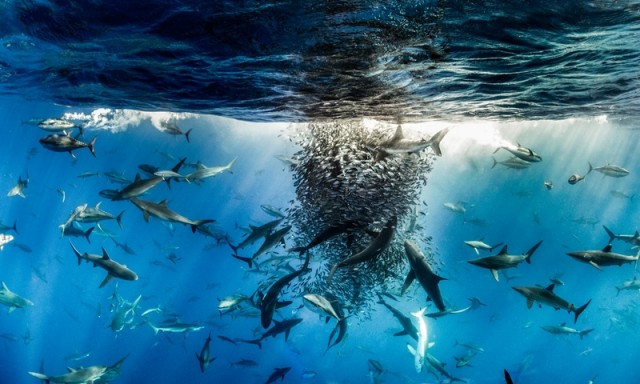
26. Article Claims Marine Protected Areas Are Not the Answer to Ocean Biodiversity
According to Professor of Aquatic and Fishery Sciences Ray Hilborn, a recent study suggesting marine protected areas (MPAs) will bring environmental and commercial benefits is flawed. A key example: how the study approaches trawling. The authors assumed that an MPA ban on trawling wouldn’t increase fishing in other areas. Protecting biodiversity in the oceans is not best accomplished via MPAs, especially in light of climate change, Hilborn said. While advocates propose MPAs as a means to fight climate change, they are ineffective against threats like acidification and pollution. MPAs won’t necessarily protect biodiversity because species are so mobile. Setting explicit targets and finding the best tools to achieve them will help. MPAs, he said, just regulate a few activities without addressing wider issues. “The illusion that you’re protecting the ocean by putting in MPAs, it’s a big lie,” he said.
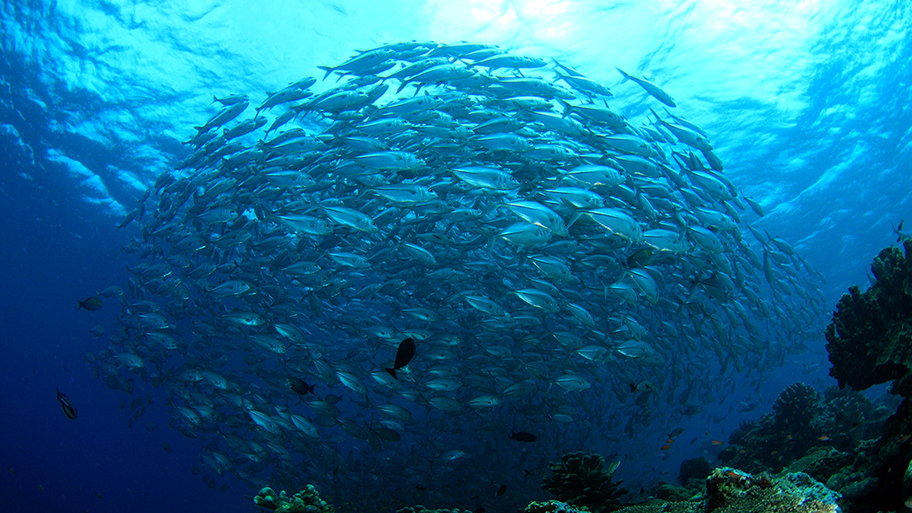
27. Letter: Nations Must Take Steps to Protect High Seas Biodiversity
A new opinion published in Science touts the importance of international maritime laws that will protect the high seas for successful ocean conservation. In 2017, the United Nations resolved to develop an international treaty for the conservation and sustainable use of the high seas. Negotiations will end this year. The authors of the letter state that the framework must conserve high-seas biodiversity and promote sustainable and equitable use. They set out three guidelines in support of this argument. First, to maximize biodiversity beyond national boundaries, the treaty should establish marine protected areas, which will preserve fish populations and ecosystem resilience. The treaty should also provide a framework for evaluating the impact of activities on the high seas. Finally, the treaty should establish an institutional framework to enable the successful implementation of these safeguards.

28. Under the Sea: Books for Little Ocean Enthusiasts and Conservationists
Kids have a lot of questions about oceans. This collection of books will inspire and delight ocean enthusiasts while creating conservationists in the process. Saving American Beach is a colorful biography of activist and conservationist MaVynee Betsch. What a Waste tackles pollution and innovative ways to repurpose waste. The Sea Book is a great primer on ocean conservation that won’t lead to nightmares about the state of our environment. Fish is a sweet story of a fisherman and his dog that teaches about ocean pollution and offers a way to combat it. I’m Getting a Shark! is about a shark-obsessed girl who is positive she’s getting a shark for her birthday and her dog who’s not so sure. Coral Reefs in Danger turns the story of coral reefs into a straightforward, engaging narrative.

29. New Cryptocurrency AquaGoat Adopts Climate Resilient Corals and a Dolphin as it Builds Blue Credentials
AquaGoat, a new digital currency dedicated to ocean cleanup and marine conservation, has started to build its blue credentials. Among its first steps are the adoption of climate-change-resilient corals in the Bahamas and a dolphin in the waters off California. AquaGoat, launched in April, gives a portion of every transaction to the AquaGoat Ocean Blue Fund. Members vote on which initiatives to back. To date, the community has donated over $19,500 to international organizations like The Ocean Cleanup, Sea Shepherd Conservation Society, Coral Vita, Ocean Conservation Society, and Blue Marine Foundation. Coral Vita, based in the Bahamas, works to grow and plant climate-change-resilient corals to help revitalize degraded coral reefs. AquaGoat donated through Coral Vita’s adopt-a-coral program to restore dying reefs. AquaGoat also adopted a dolphin through Ocean Conservation Society’s adoption program.




